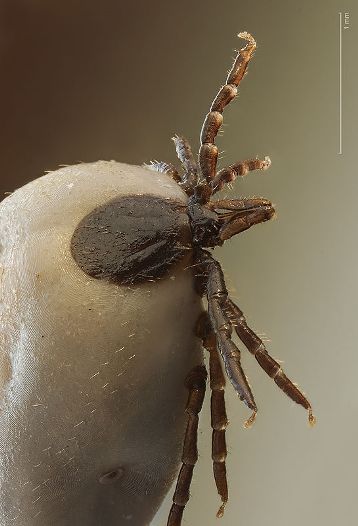Difference between revisions of "Category:Hard Ticks - UK"
| Line 22: | Line 22: | ||
| − | ===Haemaphysalis spp.=== | + | ===[[Haemaphysalis spp.]]=== |
| − | |||
| − | |||
| − | |||
| − | |||
| − | |||
| − | |||
| − | |||
| − | |||
===[[Dermacentor spp.]]=== | ===[[Dermacentor spp.]]=== | ||
Revision as of 11:20, 14 July 2010
The important tick species in the UK are all hard ticks as the environment does not suit the survival of soft ticks. They are distinguishable by differences in the morphology of the various important genera.
Ixodes spp.
Haemaphysalis spp.
Dermacentor spp.
Rhipicephalus spp.
Rhipicephalus spp. can be identified by;
- Wide palps
- Hexagonal base of capitulum
- Eyes present on idiosoma
- Not ornate
- Festoons on posterior margin
- Posterior anal groove
There are 2 Rhipicepphalus species found in Europe; R.sanguineus,the brown dog tick is found in houses and kennels in the uK as outdoor conditions are not suitable. It is a three host tick and can complete its life cycle in 4 - 5 months, though this may take longer in colder conditions. This tick transmits Lyme disease (Borrelia burgdorferi), Babesia canis, B.gibson, Erlichia canis, E.vogeli, Salmonella enteritidis, Hepatozoon canis, Rickettsia conorii, Q fever, Rickettsia rickettsii (Rocky mountain spotted fever) to dogs. R.bursa, which infects horses is found in southern europe.
Pages in category "Hard Ticks - UK"
The following 4 pages are in this category, out of 4 total.
